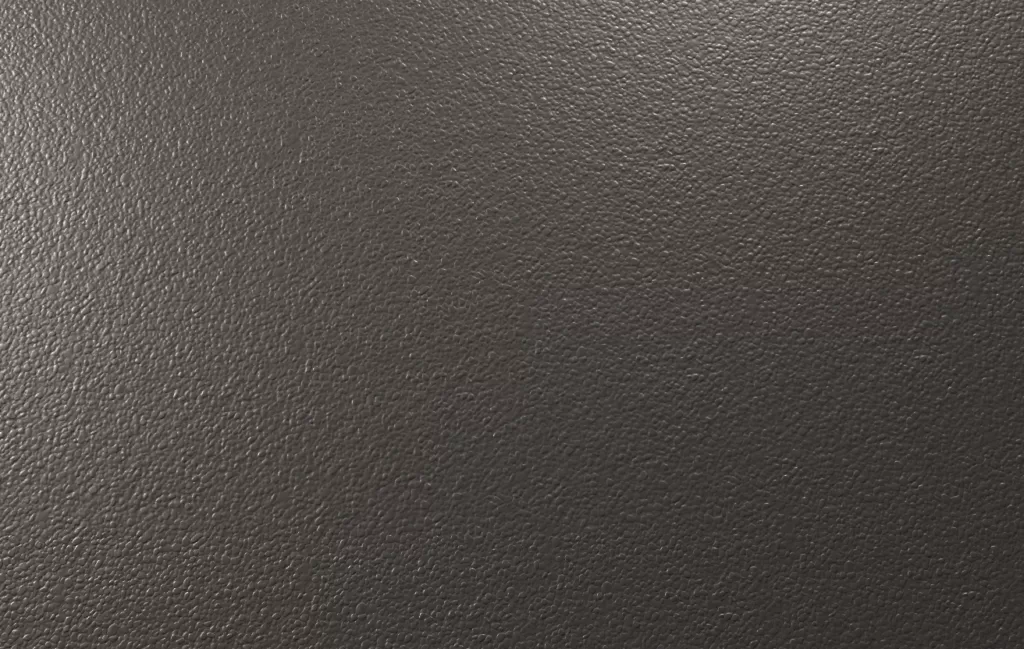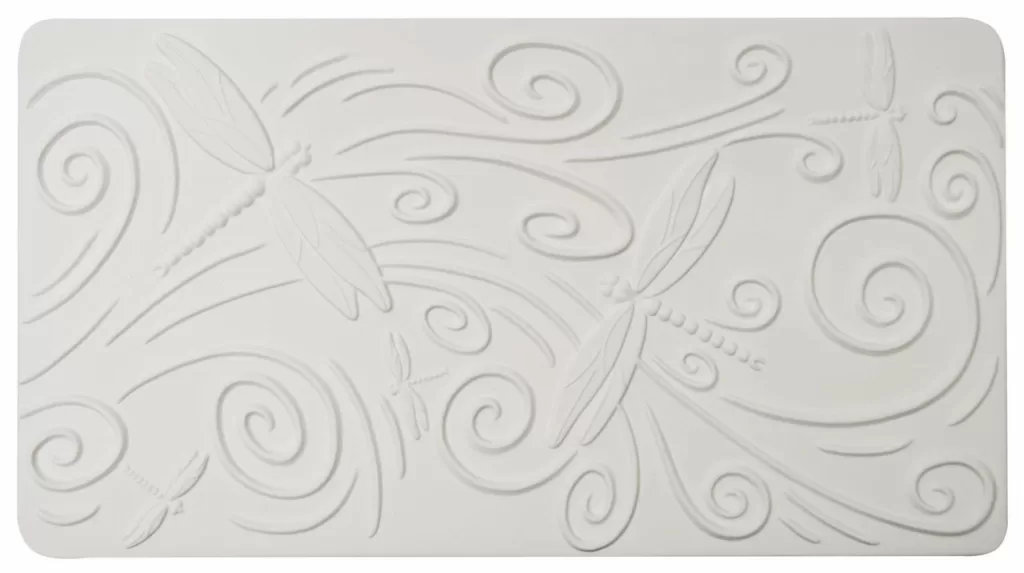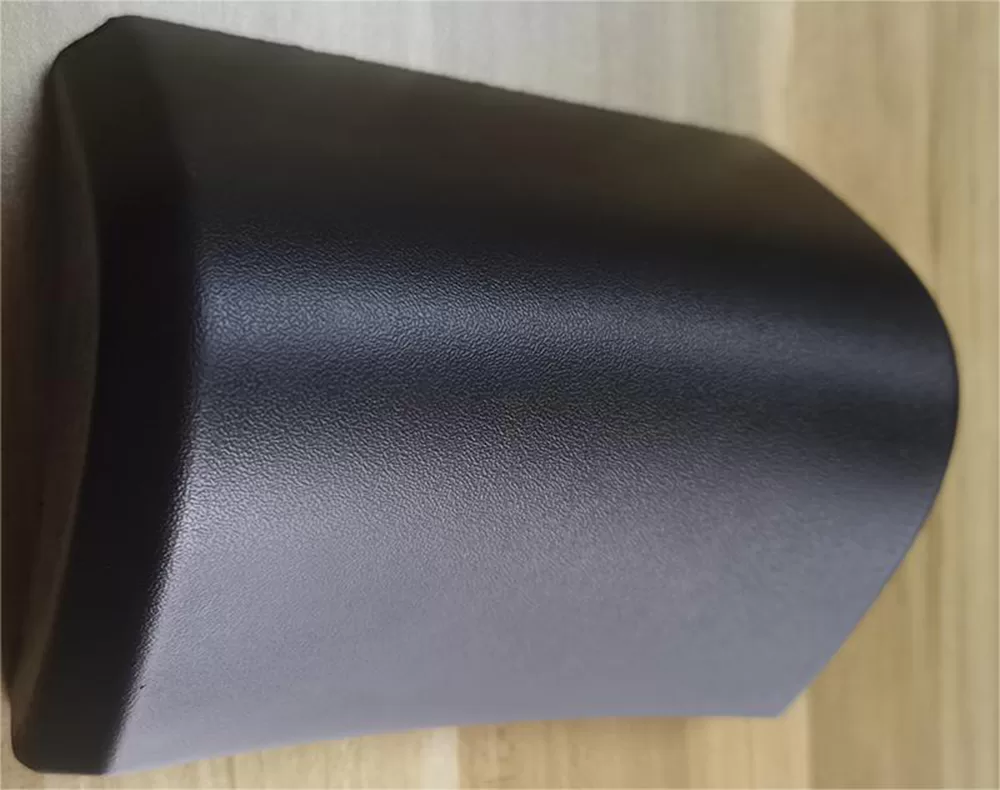폴리 우레탄 (PU) 폼 제품의 금형은 생산 공정에서 텍스처로 처리되어야합니다. 텍스처는 금형의 표면 거칠기 및 마찰 계수를 개선 할 수 있기 때문에 금형이 더 나은 접착력을 갖고 곰팡이 방출의 난이도와 문제를 줄일 수 있기 때문입니다. 동시에, 텍스처는 곰팡이의 밀봉 및 내마모성을 증가시키고 서비스 수명과 안정성을 향상시킬 수 있습니다. 따라서 텍스처링은 폴리 우레탄 폼 제품의 제조 공정에서 매우 중요한 부분입니다. 이 기사에서는 폴리 우레탄 폼 제품의 곰팡이를 질감 해야하는 이유를 자세히 설명 할 것입니다.

폴리 우레탄 폼 제품을 만드는 과정
폴리 우레탄 폼 제품은 폴리 우레탄 재료를 사용하여 제작 된 일종의 제품으로, 사운드 단열, 열 보존 및 충격 방지의 성능이 뛰어나며 건축, 운송, 가정 기기 및 항공 우주 분야에서 널리 사용됩니다. 폴리 우레탄 폼 제품을 만드는 과정은 주로 다음 단계로 나뉩니다.
- 준비 재료 : 폴리 우레탄 폼 생성물을 만드는 데 필요한 재료에는 폴리 우레탄 수지, 촉매, 경화제, 발포제, 필러 등이 포함됩니다.
- 분무 금형 : 미리 만든 곰팡이를 특수 스프레이 건에 넣고 곰팡이 표면에 폴리 우레탄 원료를 뿌린 후 분무가 완전히 균일 한 후에 거품을 일정 시간 동안 기다립니다.
- 폼 가열 : 폴리 우레탄 원료를 분무 한 후, 특수 거품 용광로에서 가열되어 빠르게 팽창하고 전체 곰팡이를 채우고 특정 형태의 폴리 우레탄 발포 생성물을 형성합니다.
- 곰팡이 냉각 : 폴리 우레탄 원료가 폼에 의해 가열 된 후, 경화제가 폴리 우레탄 발포 제품이 필요한 경도와 강도를 얻도록 발포 된 원료를 완전히 치료할 수 있도록 일정 시간 동안 곰팡이 내부에서 냉각되고 경화되어야합니다.
- 데 몰드 처리 : 금형 내부의 폴리 우레탄 생성물이 냉각되고 경화 된 후, 폴리 우레탄 폼 생성물이 금형으로부터 완전히 분리 될 수 있도록 금형을 꺼내고 데 몰려들 것이다.
- 가공 : 폴리 우레탄 폼 제품이 곰팡이에서 제거 된 후에는 다양한 산업 및 응용 분야의 특정 요구 사항을 충족시키기 위해 필요한 가공 및 표면 마감 처리가 필요합니다.
위의 것은 폴리 우레탄 폼 제품을 만드는 과정이며, 이해 당사자는 또한 내 다른 기사를 참조 할 수 있습니다. 폴리 우레탄 제품 생산의 기본 단계.
곰팡이가 든 질감은 무엇이며 무엇을하는지
텍스처링은 곰팡이 표면에 작은 오목하고 볼록한 패턴을 형성하여 금형의 표면 거칠기 및 마찰 계수를 개선하기위한 일반적인 곰팡이 표면 처리 공정으로, 제품 표면의 미학 및 표면 강도에 직접적인 영향을 미칩니다. 이 처리는 곰팡이가 더 나은 접착력을 갖도록하고 곰팡이 방출의 어려움과 문제를 줄일 수 있습니다. 텍스처는 또한 곰팡이의 밀봉 및 내마모성을 증가시켜 서비스 수명과 안정성을 향상시킬 수 있습니다. 따라서 텍스처링은 폴리 우레탄 폼 제품의 제조 공정에서 매우 중요한 부분입니다.
곰팡이 제조 공정에서 텍스처는 일반적으로 워터젯 또는 레이저 절단에 의해 달성됩니다. 금형 표면에 작은 울퉁불퉁 한 패턴을 형성하면 금형 표면이 더 거칠어 질 수 있으며, 따라서 금형 표면과 발포 된 생성물 사이의 접촉 영역을 증가시키고 접착력 및 밀봉을 향상시킵니다. 동시에, 질감은 또한 곰팡이의 내마모성을 증가시키고, 사용 중에 마모 및 손상을 줄이며, 곰팡이의 서비스 수명을 향상시킬 수 있습니다.
텍스처는 곰팡이의 표면 거칠기 및 마찰 계수를 효과적으로 향상시킬 수 있지만 실제 작동 프로세스에서는 다양한 제품 요구 사항 및 생산 공정에 따라 적절한 텍스처 솔루션을 선택해야합니다. 또한 텍스처는 텍스처 깊이와 밀도의 제어, 텍스처 위치 및 모양의 설계, 텍스처 전후 표면 처리 등과 같은 일부 문제에주의를 기울여야합니다. 따라서 텍스처 처리의 효과와 품질을 보장하기 위해 관련 규범 및 표준에 따라 엄격하게 작동해야합니다.
곰팡이 텍스처의 개발 상태
곰팡이 텍스처는 금형을 제조하는 기술로, 곰팡이 표면을 다른 패턴으로 만들 수 있으므로 금형을 내마모성, 부식 방지 및 사용시 쉽게 해제 할 수 있습니다. 산업의 발전과 기술의 발전으로 곰팡이 텍스처도 개발되고 향상되고 있습니다. 현재 주로 다음과 같은 종류의 곰팡이 텍스처 기술이 있습니다.
- 전통적인 수동 텍스처 기술 :이 기술은 스틸 브러시, 와이어 브러시, 스틸 와이어 볼 등과 같은 수공구를 사용하는 최초의 텍스처 기술입니다. 수동 작동의 결함으로 인해 제조 효율이 낮고 제품의 일관성이 좋지 않습니다.
- 기계 텍스처 기술 :이 기술은 바늘, 디스크, 이중 머리 텍스처 머신, 수동 텍스처 머신 등과 같은 일부 기계에 의해 수행됩니다. 이 기술은 기존 수동 텍스처 기술보다 효율적이며 제품의 일관성이 향상 될 것입니다.
- 디지털 텍스처 기술 : 컴퓨터 기술 개발을 통해 디지털 텍스처 기술은 곰팡이 산업에서 널리 사용됩니다. 디지털 텍스처 기술은 컴퓨터에 의해 금형 표면의 텍스처 패턴의 패턴과 깊이를 제어 할 수 있으므로 곰팡이를보다 편리하고 효율적으로 만들 수 있습니다.
일반적으로 곰팡이 텍스처 기술은 지속적으로 개선되고 발전하고 있으며 향후 더 다양하고 지능적 일 것입니다. 동시에, 텍스처 기술은 새로운 재료와 새로운 생산 공정에서 더 널리 사용될 것입니다.
질감과 제품 품질의 관계
곰팡이 텍스처 기술은 곰팡이 표면에 패턴을 만드는 과정으로, 제품에 미적 효과를 더할뿐만 아니라 제품의 품질도 향상시킵니다.
- 첫째, 도자기, 타일 및 유리와 같은 많은 제품의 제조가 필요한 산업의 경우 곰팡이 텍스처 기술을 사용하면 제품의 일관성과 정확성을 크게 향상시킬 수 있습니다. 수동 생산과 달리 Mold Texture는 각 제품이 동일한 패턴을 갖도록하여 제품의 전반적인 품질을 향상시키는 데 도움이됩니다.
- 둘째, 곰팡이 텍스처 기술은 제품의 내구성과 안정성을 향상시킬 수 있습니다. 곰팡이를 미세하게 만들면 금형 표면의 패턴이 튼튼하고 착용하기 쉽지 않도록 할 수 있습니다. 동시에, 제품의 표면을 더 아첨하여 제품의 안정성을 보장하고 제품의 고르지 않은 표면으로 인한 문제를 줄일 수 있습니다.
- 마지막으로, 곰팡이 텍스처 기술은 또한 제품의 부가 가치를 향상시키고 기업에 더 많은 경제적 이점을 가져올 수 있습니다. 일부 고급 제품은 소비자를 유치하기 위해 고유 한 장신구와 디자인을 사용해야하며, 이는 곰팡이 텍스처 기술이 중요한 역할을하는 곳입니다. 곰팡이 텍스처 기술의 영리한 사용을 통해 기업은 더 많은 예술적이고 개인화 된 제품을 생산하여 더 많은 소비자를 유치하고 제품 및 시장 경쟁력의 부가 가치를 향상시킬 수 있습니다.
요약하면, 곰팡이 텍스처 기술은 제품 품질과 밀접한 관련이 있으며, 이는 제품 생산의 정확성과 내구성을 보장 할뿐만 아니라 부가 가치와 예술적 제품 감각을 향상시킬 수 있습니다.

텍스처의 건축 방법 및 기술
금형 텍스처 기술의 구성은 두 단계로 나뉩니다.
- 첫 번째 단계는 곰팡이를 만드는 것입니다. 금형은 금형 텍스처 기술의 중요한 부분입니다. 고품질 금형을 만드는 것은 금형 표면의 패턴이 맑고 내구성이 뛰어나고 착용하기 쉽지 않도록 할 수 있습니다. 금형의 생산은 곰팡이의 정밀도와 정확성을 보장하기 위해 레이저 절단 및 CNC 가공과 같은 고급 기술 장비를 사용하면서 알루미늄 합금, 강철 및 플라스틱과 같은 적합한 재료를 선택해야합니다.
- 두 번째 단계는 텍스처링입니다. 텍스처는 곰팡이 텍스처 기술의 핵심 부분입니다. 텍스처링의 구조는 먼저 만든 금형에 페인트 층을 뿌린 다음 페인트가 아직 건조되지 않을 때 곰팡이 표면을 특별한 장식 필름으로 덮어야합니다. 일반적으로 장식 필름은 폴리 에스테르 필름, 플라스틱 필름 및 기타 재료로 만들어졌으며 패턴은 필름에 페인트하거나 끈적 끈적 할 수 있습니다.
- 다음으로, 필름을 금형 표면에 단단히 맞추기 위해 열로 금형 표면에 눌려집니다. 그런 다음 몰드는 페인트가 완전히 건조되고 경화되도록하기 위해 일정 기간 동안 일정한 온도 (약 50-80도)로 배치됩니다. 마지막으로, 곰팡이 표면의 장식 필름은 부드럽게 벗겨져 성형 텍스처의 구성을 완료합니다.
곰팡이 텍스처에 대한 팁 :
- 올바른 페인트와 장식 필름을 선택하십시오. 페인트와 장식 필름의 선택은 곰팡이 표면의 장식 효과와 내구성을 결정합니다.
- 가열 시간과 온도를 제어하십시오. 가열 시간이 너무 짧거나 온도가 너무 높으면 페인트 필름 변색, 필름 주름 및 기타 문제가 발생하여 곰팡이 표면 장식의 효과와 품질에 영향을 미칩니다.
- 작동 할 때 금형 표면과 만지거나 충돌하지 않도록주의하십시오. 곰팡이 표면의 충돌 또는 마찰은 장식 패턴의 변형 또는 손상으로 이어질 수 있습니다.
- 곰팡이를 정기적으로 유지하고 수리하십시오. 금형 표면의 먼지와 잔류 물을 제 시간에 정시하여 곰팡이의 표면을 깨끗하고 반짝이게하여 곰팡이의 서비스 수명을 연장하고 장식 효과를 유지하십시오.
텍스처에 대한 예방 조치 및 문제 해결
텍스처는 주로 금형 표면에 특정 구조를 생성하여 금형의 항 슬립 및 접착력을 향상시켜 금형 처리에서 중요한 과정입니다. 그러나 프로세스 중에 주목하고 해결해야 할 몇 가지 예방 조치와 문제가 있습니다.
주의
- 적절한 텍스처 패턴 선택 : 텍스처 패턴의 선택은 매우 중요하며 사용 필드, 슬립 효과, 청결 및 기타 요인을 고려해야합니다. 다른 텍스처는 양각 깊이, 패턴 밀도, 인터레이스 각도 및 기타 매개 변수에 해당하는 조정에 해당합니다.
- 텍스처 패턴의 온도와 압력 : 텍스처 패턴의 온도와 압력은 텍스처 패턴의 영향에 영향을 미치는 주요 요인이며,이 두 매개 변수를 마스터해야합니다. 텍스처 온도가 너무 높으면 쉽게 곰팡이 변형이 발생하고 너무 낮은 균열은 균열이 쉽게 나타납니다. 너무 많은 압력은 곰팡이 표면 손상으로 이어지고 너무 적은 텍스처 효과가 나옵니다.
- 고품질 텍스처 재료 선택 : 텍스처의 품질은 텍스처의 영향에 직접적인 영향을 미치므로 텍스처가 명확하거나 쉬운 문제가되지 않는 것과 같은 문제를 피하기 위해 안정적인 품질의 고품질 텍스처 재료를 선택해야합니다.
문제 해결
- 텍스처는 명확하지 않습니다. 텍스처 압력이 충분히 크지 않아서 엠보싱 깊이가 충분하지 않으며 텍스처 온도가 너무 낮습니다. 텍스처 매개 변수를 조정하고 텍스처 수를 늘려 텍스처가 완전히 구현되도록 할 수 있습니다.
- 텍스처는 단단하지 않습니다. 텍스처 재료의 품질이 좋지 않으며 텍스처 온도가 너무 높거나 낮은 질감으로 인해 발생할 수 있습니다. 텍스처 재료를 더 나은 품질로 교체하고 텍스처 매개 변수를 조정하며 텍스처의 횟수를 늘릴 수 있습니다.
- 곰팡이 표면 손상 : 텍스처 압력이 너무 많고, 곰팡이 표면의 경도가 충분하지 않으며, 재료의 품질이 양호하지 않음 등으로 인해 발생할 수 있습니다. 텍스처 압력을 적절하게 조정하고 금형 표면의 경도를 향상 시키며 더 나은 품질의 재료를 선택할 수 있습니다.
텍스처의 적용 예
폴리 우레탄 어깨와 목 이완기는 어깨와 목 부위의 피로와 강성을 완화하는 데 사용되는 일반적인 마사지기구입니다. 생산 공정에서 곰팡이 텍스처는 편안한 느낌과 아름다운 질감으로 폴리 우레탄 폼을 만드는 데 중요한 과정입니다. 다음은 자세한 응용 프로그램 예입니다.
먼저, 우리는 적절한 크기의 곰팡이를 준비하고 금형의 폴리 우레탄 폼의 부드러운 방출을 용이하게하기 위해 곰팡이의 곰팡이 오일 또는 방출 제를 금형 표면에 적용해야합니다. 다음으로, 그들은 폴리 우레탄 폼의 편안한 느낌과 미적으로 유쾌한 패턴을 만들기 위해 특정 곰팡이를 만들어야합니다. 곰팡이의 패턴은 질감이 있으며 고객 요구 사항 및 시장 동향에 따라 사용자 정의 할 수 있습니다.
다음으로, 우리는 준비된 폴리 우레탄 재료를 가져다가 곰팡이에 부어 특정 기간 동안 발포되어 있습니다. 이 과정에서 자동화 된 장치는 금형 표면 위로 폼을 골고루 뿌려서 위에서 아래로 빠르게 회전하여 올바른 두께와 패턴을 만듭니다.
폴리 우레탄 폼이 충분히 발포되고 충분히 강한 경우, 우리는 데 몰딩 및 에지 트리밍과 같은 후속 단계를 계속합니다. 최종 결과는 편안하고 심미적으로 유쾌한 폴리 우레탄 어깨와 목이 편안한 텍스처가 달린 텍스처가 있습니다.
요약하면, 곰팡이 텍스처는 폴리 우레탄 폼 제품을 생산하는 데 효과적인 과정이며보다 미적 외관과보다 편안한 느낌을 제공합니다. 이 과정은 장식 재료, 카시트 쿠션, 의료 용품 등과 같은 다양한 유형의 폴리 우레탄 폼 제품에서 널리 사용되었습니다.
텍스처의 미래 개발 추세
폴리 우레탄 폼 제품 산업의 개발로 인해 중요한 프로세스 중 하나 인 곰팡이 텍스처도 지속적으로 개발되고 개선되고 있습니다. 다음은 미래의 개발 추세와 곰팡이 텍스처의 전망입니다.
개선 및 자동화 정도가 더욱 향상됩니다.
제조 기술의 지속적인 진전으로 인해 곰팡이 텍스처의 생산은 더 세련되고 자동화 될 것입니다. 예를 들어, 지능형 CNC 공작 기계 및 자동화 된 생산 라인은 다양한 복잡한 금형 패턴을 빠르고 정확하게 생산하여 생산 효율성과 제품 품질을 향상시킬 수 있습니다. 동시에 인공 지능 및 기타 기술은 곰팡이 패턴의 설계 및 최적화에 더 많은 도움을 제공하여 제품의 외관을 더욱 아름답게 만들고 시장 수요를 충족시킬 수 있습니다.
혁신적인 디자인은 개발의 열쇠가 될 것입니다
앞으로 시장 경쟁이 심화됨에 따라 혁신적인 제품 설계는 제조업체가 경쟁력을 향상시키는 중요한 수단이 될 것입니다. 제품 외관의 중요한 부분으로서 Mold Texted는 소비자의 변화하는 요구를 충족시키기 위해 더 많은 창의성과 디자인이 필요합니다.
환경 친화적 인 재료가 대중화 될 것입니다
환경 보호 및 건강에 대한 우려에 대한 인식이 높아짐에 따라 미래의 곰팡이 텍스처에 사용되는 재료는 생분해 성 재료 또는보다 건강한 폴리 우레탄 재료의 사용과 같이 점점 더 환경 친화적이고 건강해질 것입니다.
다각화 된 수요는 곰팡이 텍스트의 개발을 주도 할 것입니다
다양한 폴리 우레탄 폼 제품이 출현함에 따라 곰팡이 텍스처에 대한 수요도 더욱 다양해질 것입니다. 앞으로 성형 텍스처는보다 다른 폴리 우레탄 폼 제품에 적용해야하며 다른 제품에 대한 더 많은 곰팡이 텍스처가 개발 될 것입니다.
요컨대, 미래의 곰팡이 텍스처는 정제, 자동화, 혁신적인 설계, 환경 친화적 인 재료 및 다양한 요구 측면에서 계속 발전하고 향상시켜 폴리 우레탄 폼 제품 생산을위한보다 효율적이고 개인화되고 환경 친화적 인 솔루션을 제공 할 것입니다.

결론
곰팡이 표면에 작은 패턴을 생성하여 달성하는 텍스처링은 접착력, 밀봉 및 내마모성을 향상시켜 제품 품질과 일관성을 향상시킵니다. 곰팡이 텍스처링 제품의 미학뿐만 아니라 기능도 PU 폼 생산 공정에서 중요한 역할을 강조합니다.

